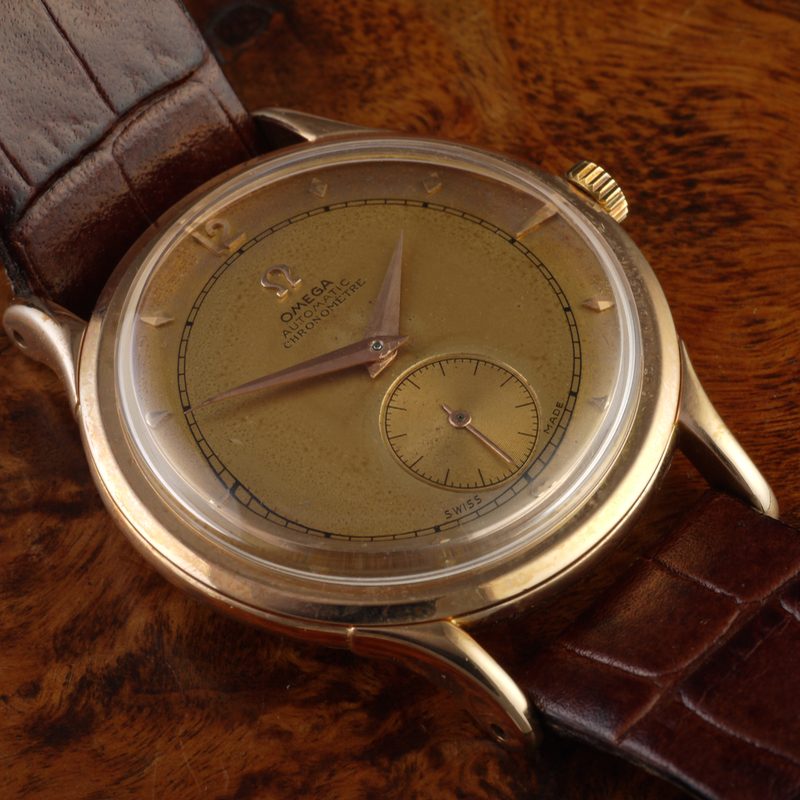
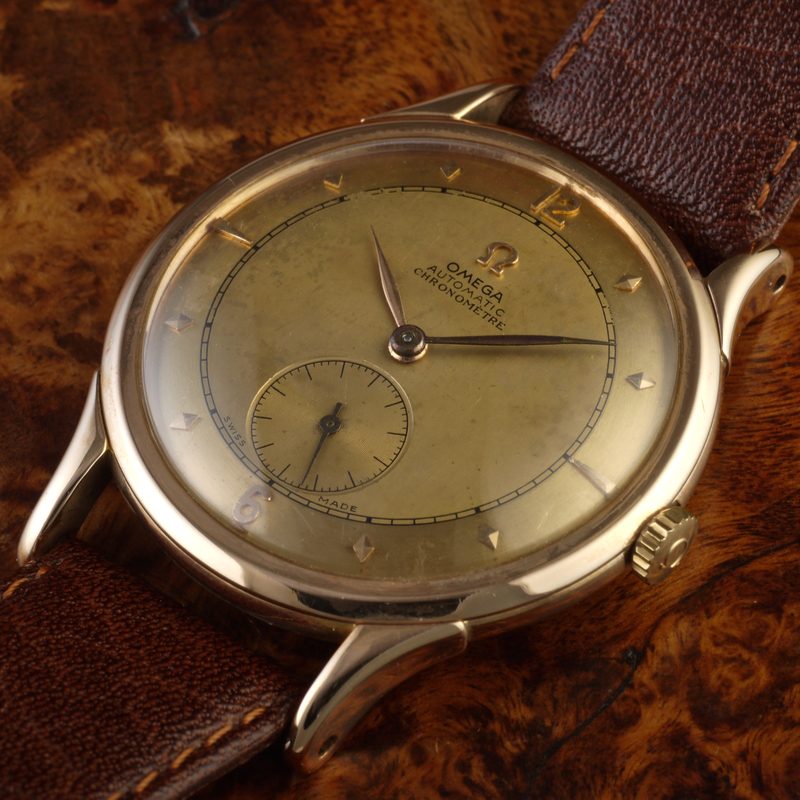
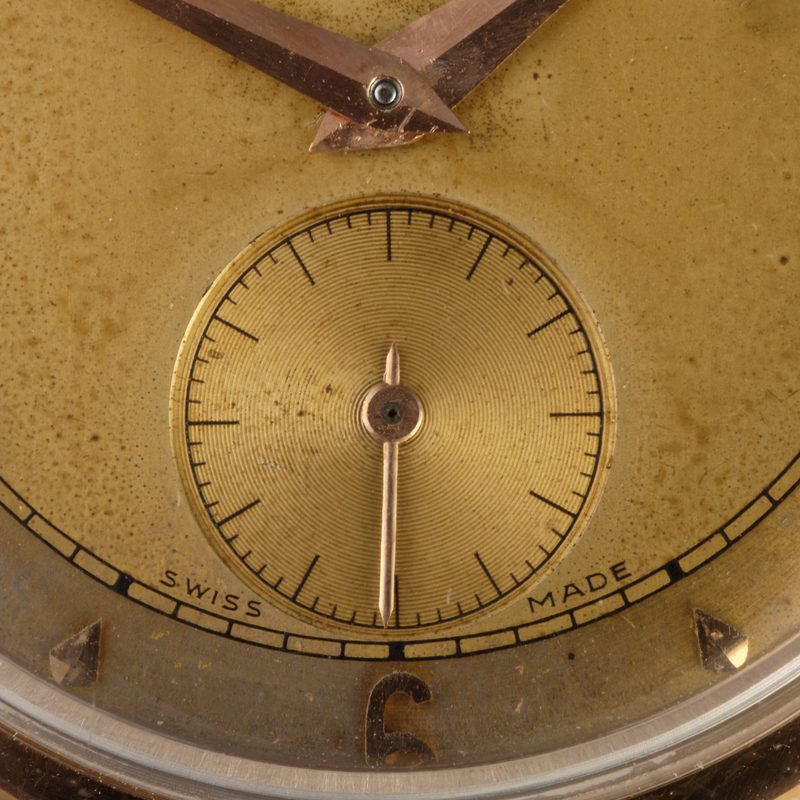
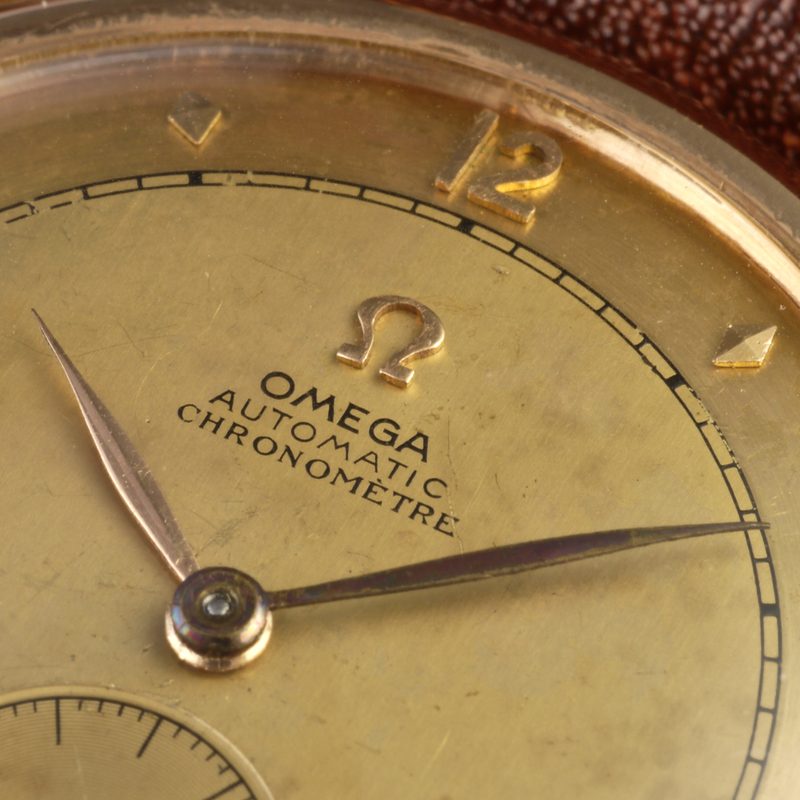
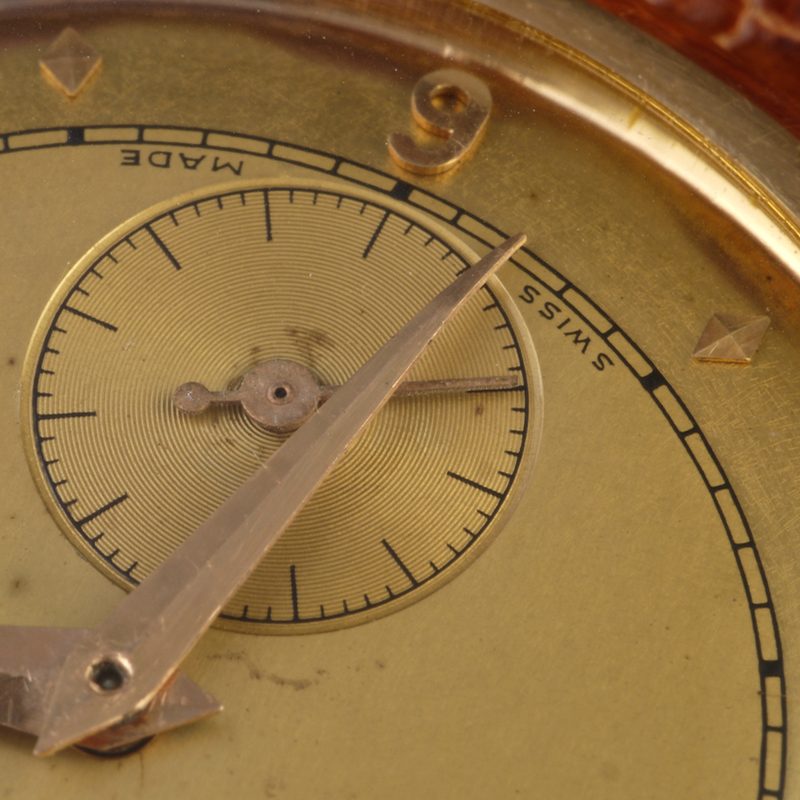

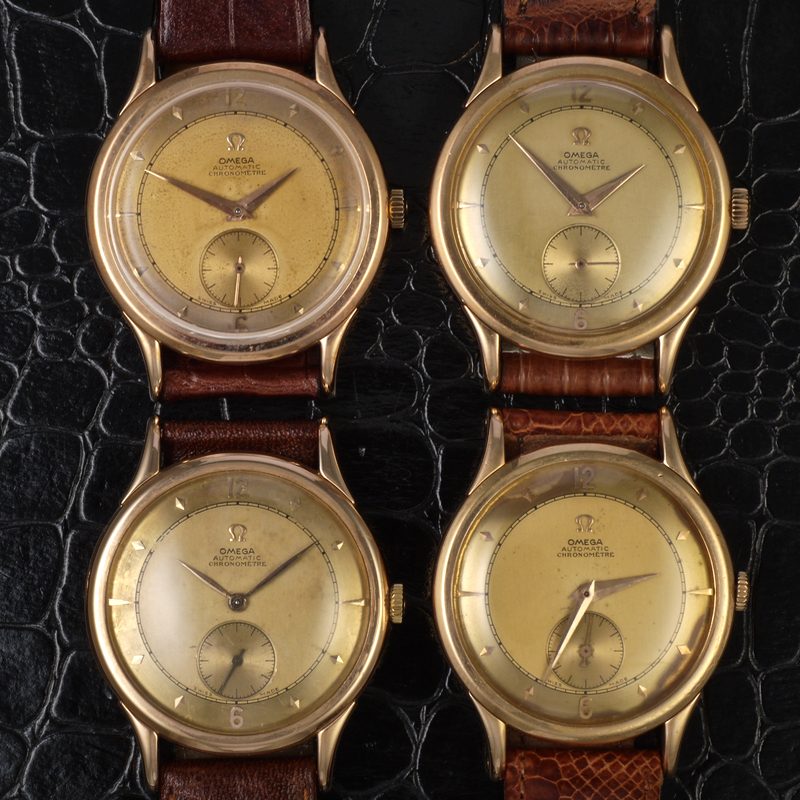
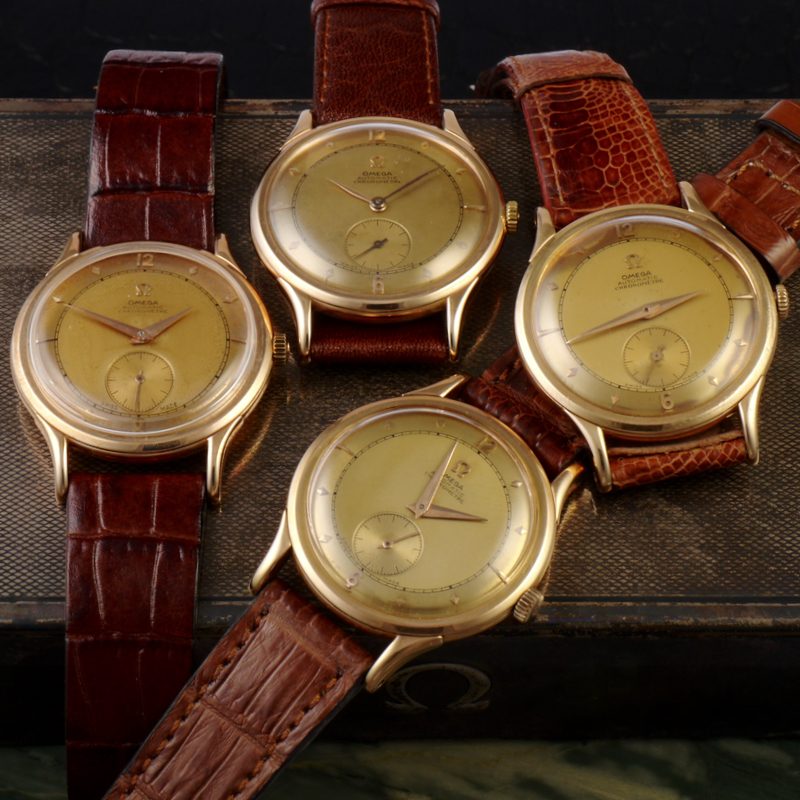
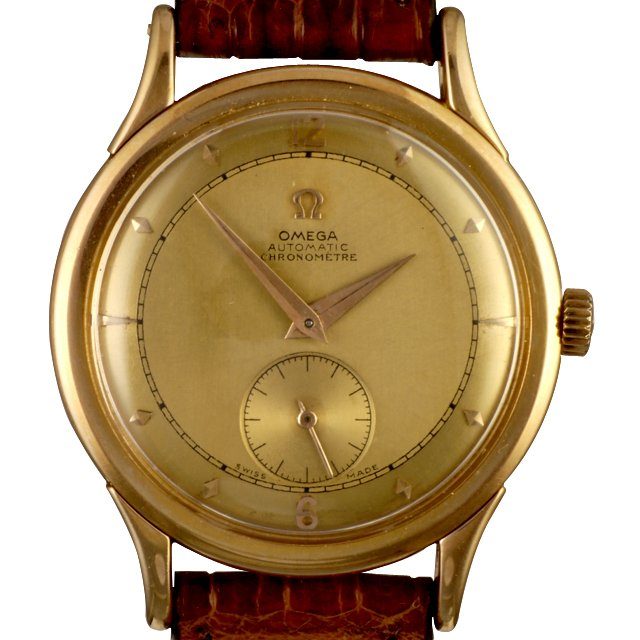
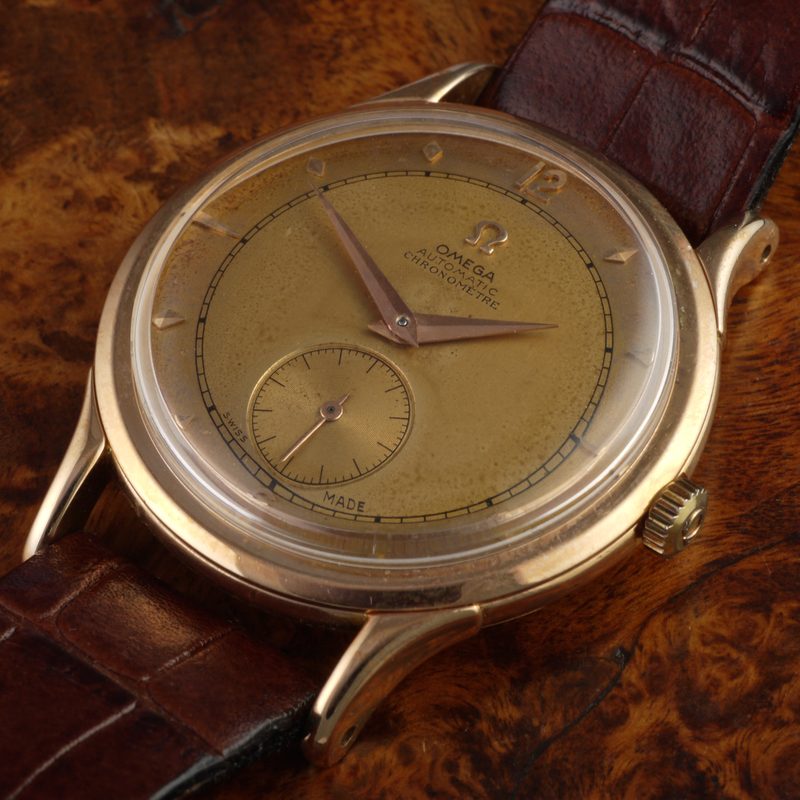
Omega Centenary
The Soviet Union begins testing atomic weapons1948 Omega Centenary ref. 2499 and 2500 gold automatic Chronometer movement cal. 265 30.10 RA PC JUC, two-tone gold dials.
The Centenary is Omegas first automatic chronometer created in 1948 to commemorate the companys centenary. It was produced only in solid gold and in limited quantities (around 8,000).
Basically there were two versions of the Centenary, the reference 2500 with a 35.5mm case and the reference 2499 with a small 33mm. case. The Centenary was so successful that Omega started developing a successor that would be produced in large quantities and become a collection on its own. This became the Omega Constellation collection that was introduced to the market in 1952 as a new line-up of watches with chronometer movements to be produced in series.
Omega was founded in 1848 by Louis Brandt at the age of 23. The brand’s reputation grew fast and in 1895 the watches achieved a precision of 30 seconds a day.
By the turn of the 19th century Omega was one of Switzerland’s largest watch companies with 240,000 watches produced annually and employing 800 people.
Omega made its debut in sports during the Gordon Bennett international ballooning Cup in 1917; since then Omega has gone on to be the official timekeeper at 21 Olympic Games.
In 1936 Omega set the remarkable World precision record of 97.8 points at the Kew-Teddington observatory in England.
In 1957, with motorsport in mind, Omega launched the Speedmaster, which in 1965 was chosen by NASA as its official chronometer in Space. Four years later the Moonwatch was the first watch to be worn on the Moon, when on 21st July 1969 Neil Armstrong made his giant leap for mankind. Currently Omega belongs to the Swatch Group.
